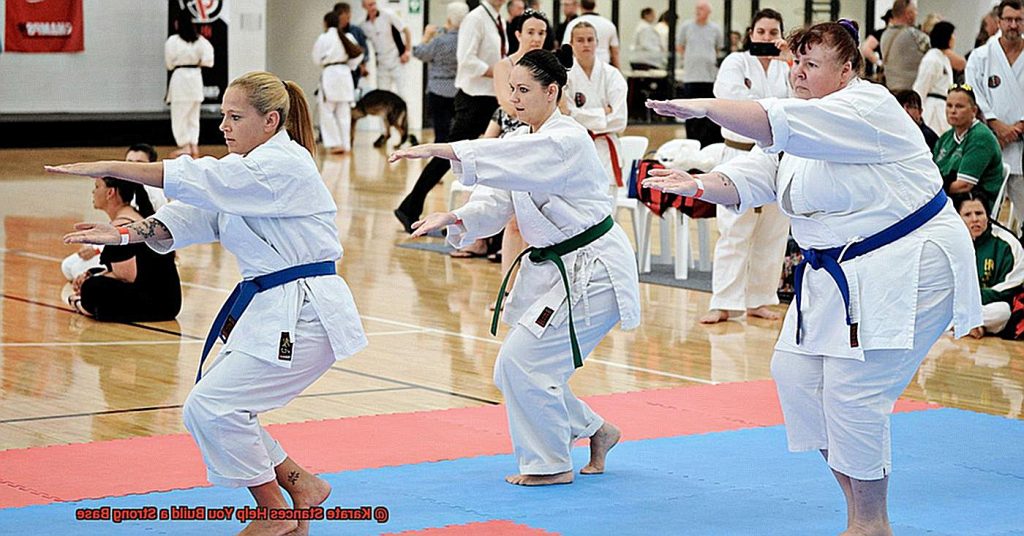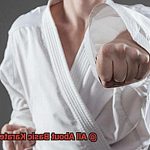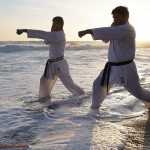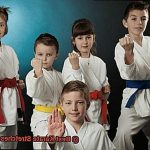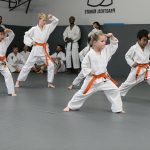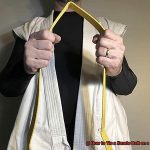Do you often feel like you’re struggling to maintain balance and stability during your martial arts practice?
Are you tired of feeling wobbly and weak? It’s time to shift your focus to the power of karate stances.
Karate stances are more than just a flashy display of technique – they are a crucial component in building a strong foundation for strikes, kicks, and movements. By honing your stances, you can increase your power, control, and balance.
With consistent training, karate stances can help you generate incredible force from the ground up. This not only maximizes the effectiveness of your techniques but also reduces the risk of injury.
Moreover, karate stances promote stability and control, enabling you to shift weight rapidly and change direction with ease. Whether you’re new to martial arts or an experienced practitioner, mastering your stances is vital for advancing in your practice.
With dedication and regular practice, you’ll soon find yourself standing stronger, striking harder, and moving with greater efficacy.
What are Karate Stances?
Karate stances are the building blocks of this martial art, providing a stable foundation for all techniques.
They allow practitioners to generate power, maintain balance, and move effectively during combat. There are various types of karate stances, each with its unique purpose and characteristics.
The front stance or zenkutsu-dachi is a powerful forward-facing stance that emphasizes the front leg’s strength. It provides stability, making it ideal for forward-moving techniques or delivering a strike with force.
Practicing this stance regularly helps in developing strength and balance, enhancing overall martial arts skills. The horse stance or kiba-dachi is a low stance that emphasizes leg strength and stability.
It requires standing with your feet shoulder-width apart and toes pointing outwards at a 45-degree angle, similar to riding a horse. This stance helps in developing lower body strength and stability, making it ideal for grappling techniques.
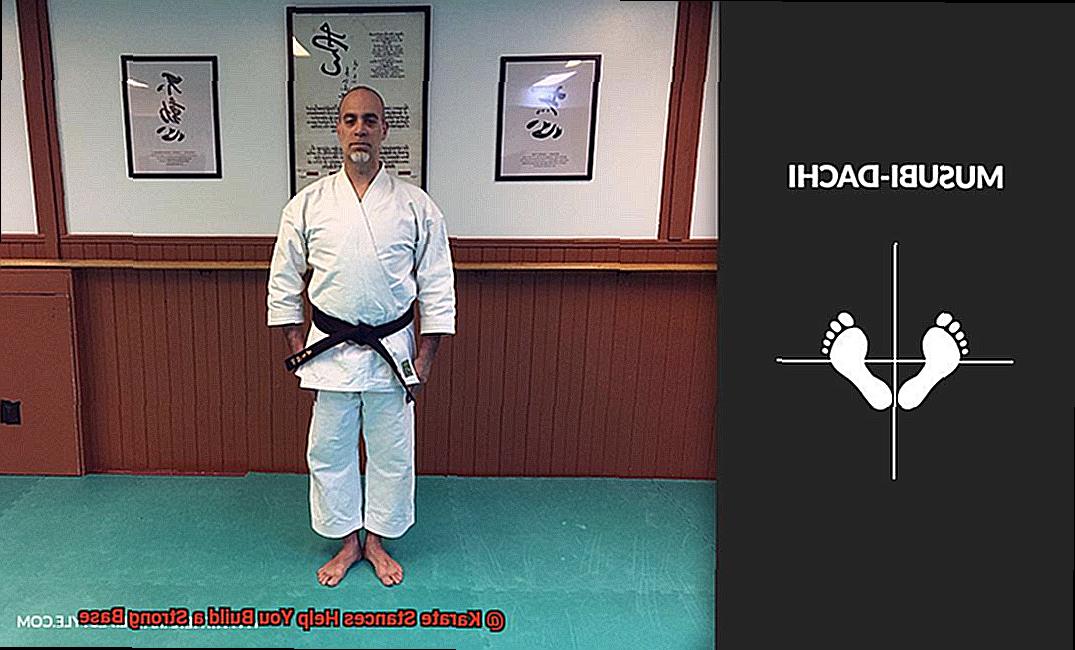
The sumo stance or shiko-dachi is a wide stance that emphasizes lower body strength and stability. It requires standing with your feet wider than shoulder-width apart and toes pointing outwards at a 45-degree angle.
This stance helps in developing lower body strength and stability to generate powerful strikes. The cat stance or neko-ashi dachi is a short stance that emphasizes quick movement and agility.
Imagine yourself standing on one foot with the other foot resting on the inside of the knee, like a cat ready to pounce. This stance requires excellent balance and quickness to evade attacks while preparing for counter-attacks.
The hourglass stance or sanchin-dachi is an hourglass-shaped stance that emphasizes strength and energy generation through the whole body. It requires proper alignment, strength, and balance to generate powerful strikes and blocks.
Practicing this stance regularly helps in developing overall body strength and energy generation. In conclusion, mastering karate stances is crucial for building a strong foundation in martial arts.
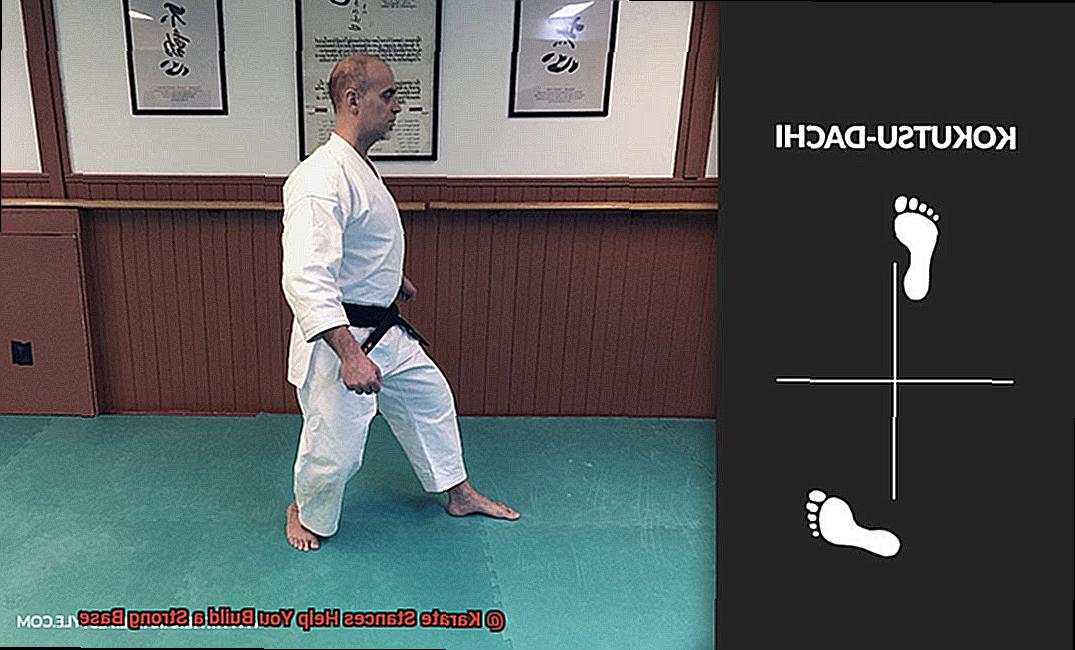
Benefits of Karate Stances
Karate stances offer an array of benefits that can help enhance your overall martial arts skills, both physically and mentally.
Perhaps the most critical benefit of karate stances is their ability to build a robust base. A strong foundation is crucial for generating power in your techniques, such as punching, kicking, or blocking.
Without a stable base, your moves will lack the necessary force and leave you open to attacks. By practicing stances regularly, you can strengthen your legs, hips, and core muscles, leading to increased stability and balance.
Karate stances also contribute to improving flexibility. Many stances require practitioners to stretch their muscles, which helps improve their range of motion.
This increased flexibility not only makes karate techniques more effective but also reduces the risk of injury. But the benefits don’t end there; karate stances also help develop mental focus and discipline.
It takes a great deal of concentration and discipline to maintain a proper stance for an extended period. By practicing stances regularly, students can develop these skills, which can be applied in other areas of their lives.
Whether you are a beginner or an experienced practitioner, incorporating stances into your training routine can help you become a better martial artist both physically and mentally.
Different Types of Karate Stances
Karate stances are crucial for building a strong foundation in martial arts. Practicing different types of karate stances regularly can help you improve your balance, stability, flexibility, and coordination, thereby enhancing your overall skills.
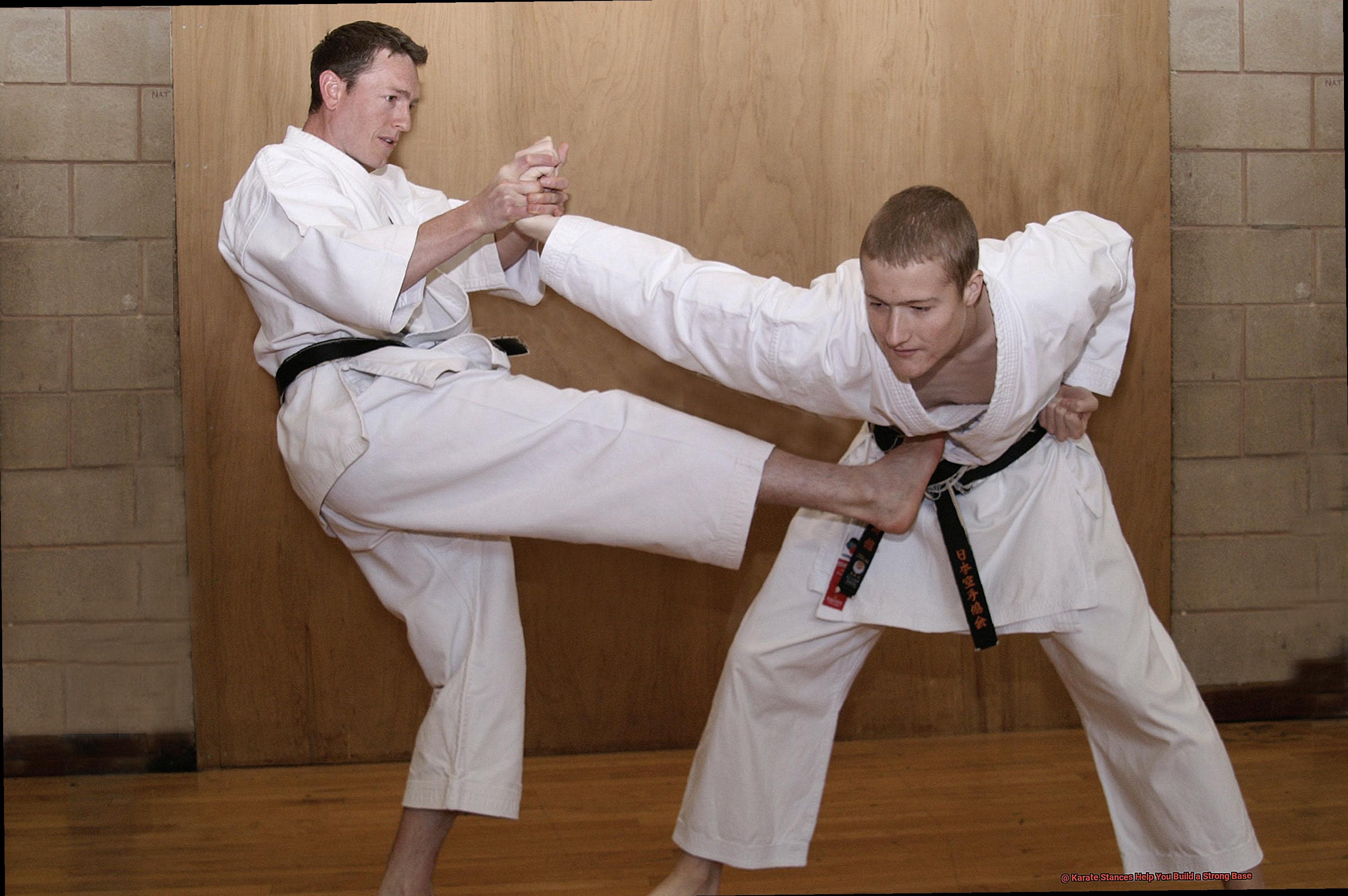
So, let’s explore the four different types of karate stances and their unique benefits.
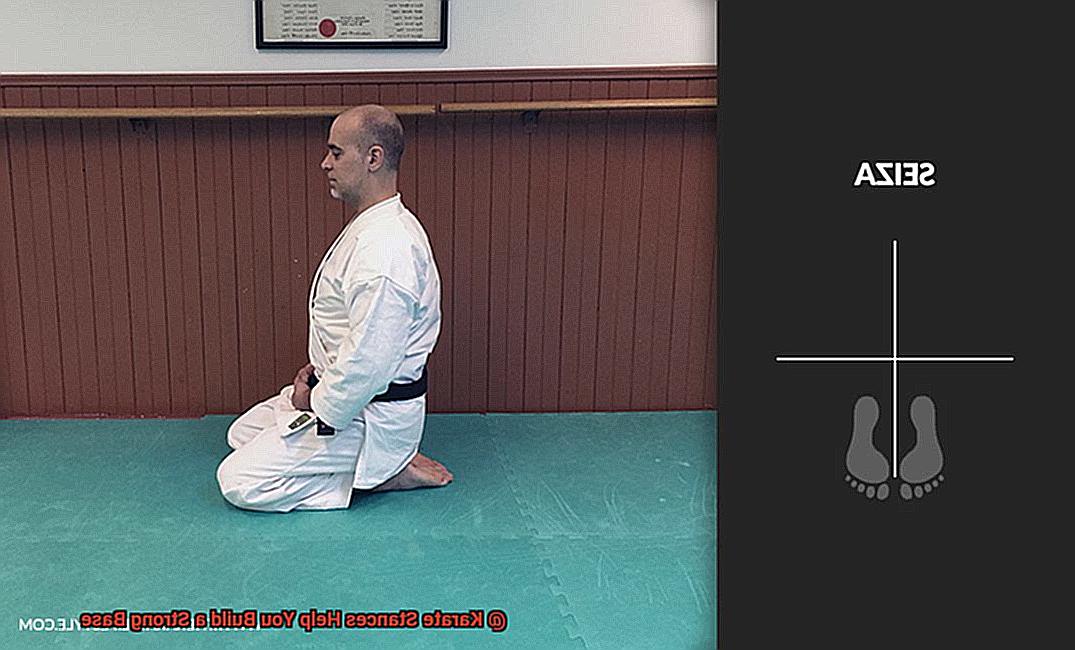
Firstly, we have the shizentai stance, also known as the natural stance.
This is the most fundamental stance in karate that involves standing with feet shoulder-width apart and toes pointing straight ahead. The shizentai stance is perfect for executing basic movements like stepping forward or backward and providing a stable base to perform techniques.
Next up is zenkutsu dachi or front stance. In this stance, one foot is placed forward while the other foot is placed back, with both feet pointing straight ahead.
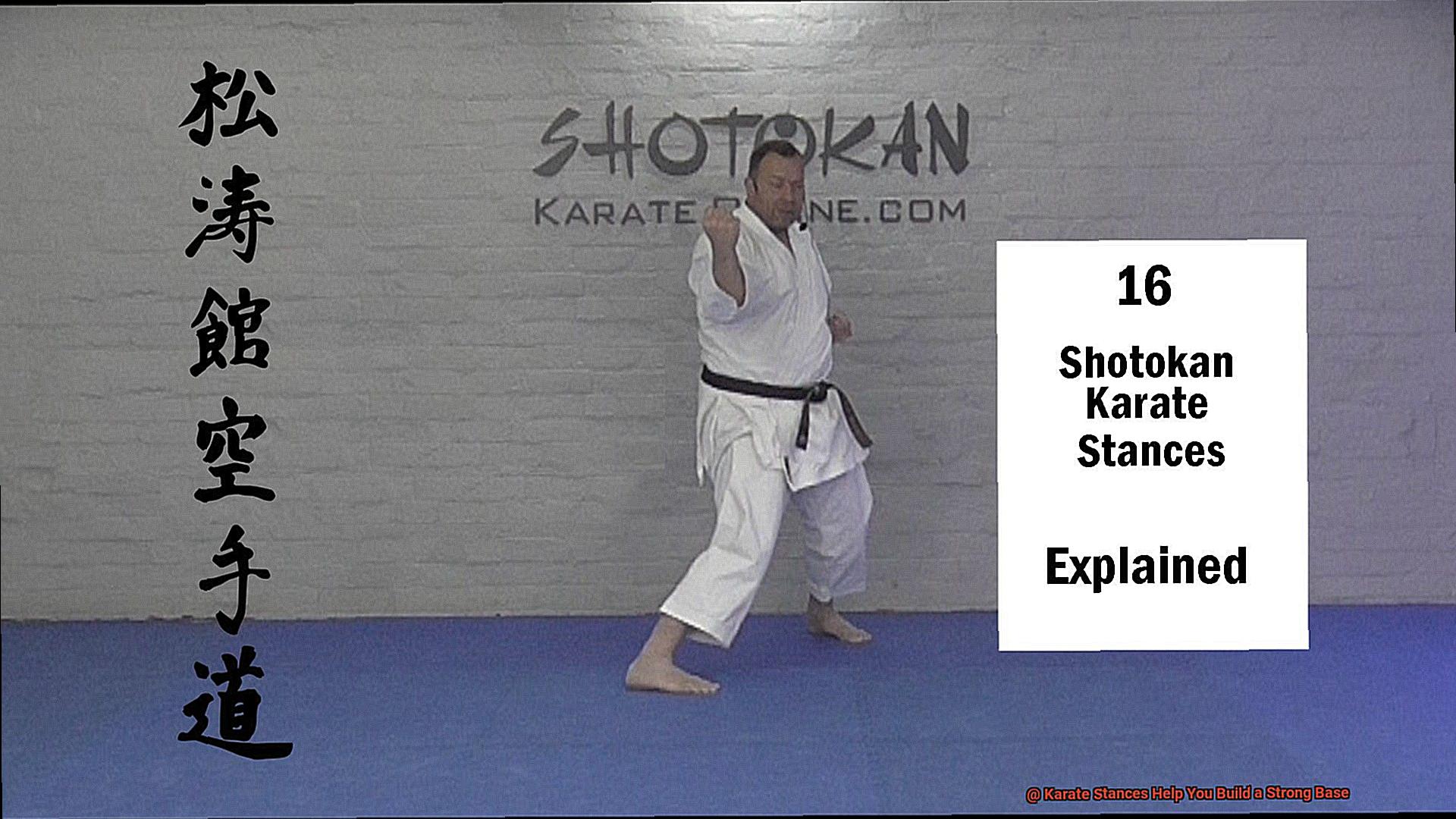
The zenkutsu dachi stance is excellent for generating maximum power while performing powerful punches and kicks. It helps build leg strength and improve balance.
The kiba dachi or horse-riding stance is another important karate stance that requires placing feet wide apart and turning outwards with knees bent. This stance provides a solid base for executing low kicks and blocks while maintaining balance during grappling techniques.
Finally, we have the neko ashi dachi or cat stance – an advanced karate stance that requires good balance and flexibility. In this stance, one foot is placed in front of the other with the heel of the front foot touching the toes of the back foot.
The neko ashi dachi is used for quick movements and evasive techniques. To sum up, mastering different types of karate stances can help you perform techniques with greater ease and effectiveness by improving your balance, stability, flexibility, and coordination.
Remember, just like a house needs a sturdy foundation to stand tall, a karate practitioner needs strong stances to execute powerful techniques.
The Zenkutsu-Dachi (Front Stance)
Welcome to the exciting world of Karate, where every move counts and every stance matters.
Amongst the various stances, the Zenkutsu-Dachi or Front Stance stands out as a fundamental posture that forms the backbone of Karate training. The Zenkutsu-Dachi stance is a forward-facing stance that emphasizes balance and stability while delivering powerful strikes.
To perform this stance, stand with your feet hip-width apart and step forward with one foot, extending it about one-and-a-half shoulder widths in front of the other foot. Your back leg should be straight and locked out, while the front leg is bent at a 90-degree angle with the knee positioned directly above the ankle.
This posture distributes your weight equally between both legs, with your hips facing forward and torso upright. When executed correctly, this stance is an ideal position to deliver strong punches, strikes, and kicks.
Not only does it develop lower body strength and stability by working the quadriceps, hamstrings, glutes, and calf muscles, but it also improves balance, coordination, and overall body awareness. One of the key benefits of practicing the Zenkutsu-Dachi stance is that it trains your body to maintain a low center of gravity.
This is a crucial aspect of Karate as it allows for greater control over movements and improves power generation. When your center of gravity is low, you can generate maximum force in your strikes while maintaining balance and stability.
Overall, the Zenkutsu-Dachi stance is an indispensable component of Karate training as it builds a strong foundation for all other techniques. It emphasizes balance, stability, and strength-building while delivering powerful strikes.
Just like building a sturdy foundation for a house is essential to stand tall and strong against any challenge, mastering the Zenkutsu-Dachi stance is crucial for a Karate practitioner to execute powerful techniques with grace and precision.
The Kiba-Dachi (Horse Stance)
Welcome to the world of Karate, where every stance and technique plays a crucial role in mastering this martial art.
In our previous section, we discussed how the Zenkutsu-Dachi stance can help build a strong foundation for all other techniques. Now, let’s explore another fundamental stance that is equally essential- the Kiba-Dachi or Horse Stance.
The Kiba-Dachi stance is one of the most fundamental and widely used stances in Karate. This low, wide stance resembles the posture of a horse and is perfect for building leg strength, improving balance, and developing stability.
It provides a solid base for beginners to perform various Karate techniques with ease. To perform the Kiba-Dachi stance, start by standing shoulder-width apart and bending your knees to a 90-degree angle.
Distribute your weight evenly between both legs and keep your body upright. You can hold your hands in front of your chest or at your sides, depending on the specific form you are practicing.
This stance is often used as a starting position for many Karate techniques and can also be used to transition between different stances. Holding this stance for extended periods can help increase strength and endurance in your legs, which will come in handy when performing kicks and other advanced moves.
However, it is crucial to maintain proper alignment and balance when practicing this stance. Firmly plant your feet on the ground, align your knees with your toes, keep your hips level, and relax your shoulders to maintain stability.
In summary, the Kiba-Dachi or Horse Stance is an essential stance in Karate that helps practitioners develop a strong base for their techniques. By focusing on proper form and alignment, students can significantly improve their balance, stability, and leg strength.
Just like constructing a house requires a sturdy foundation to stand tall against any challenge, the Kiba-Dachi creates a solid base for all your Karate moves.
The Kokutsu-Dachi (Back Stance)
To perform the Kokutsu-Dachi, begin by standing with your feet hip-width apart.
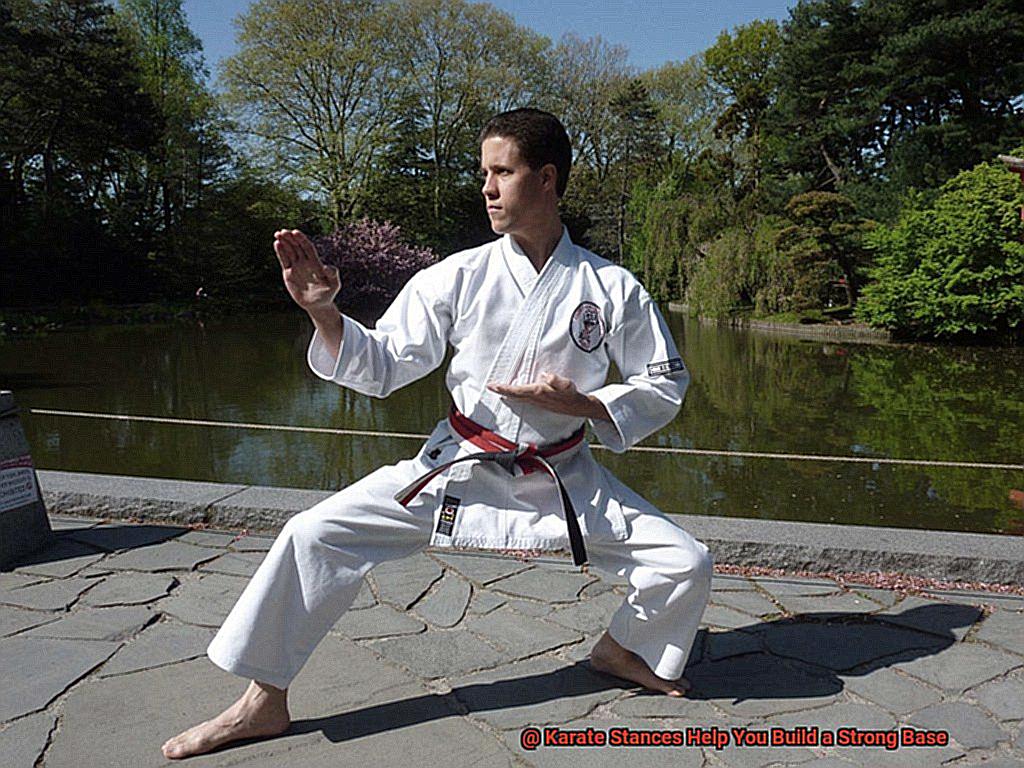
Next, take a step back with one foot while keeping your toes pointed forward and your heel lifted off the ground. Your back leg should remain straight, while your front leg should be bent at a 90-degree angle.
The Kokutsu-Dachi is an excellent stance for building leg strength and stability. By engaging your legs, hips, and glutes while holding this stance, you will strengthen these muscles over time.
Additionally, this stance strengthens core muscles that are crucial for balance and stability during karate movements. But that’s not all – the Kokutsu-Dachi also improves flexibility and range of motion in the lower body.
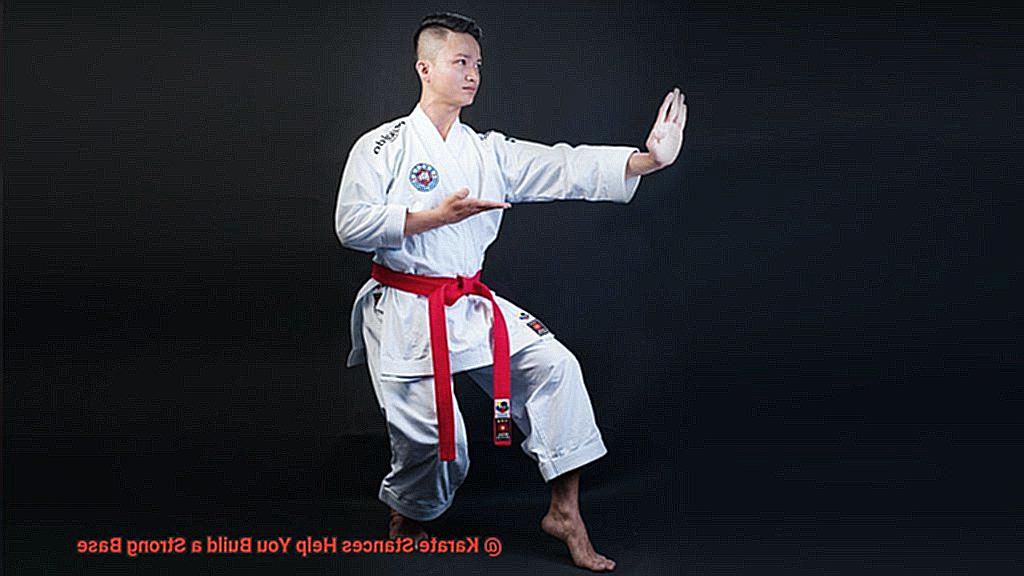
As you hold this stance for longer periods, your body becomes accustomed to the deeper stretch, allowing you to increase your range of motion over time. This increased flexibility ultimately translates into more power and speed in your kicks and strikes during karate practice.
Furthermore, proper posture and alignment are paramount when performing the Kokutsu-Dachi.
Maintaining a straight back and upright posture during this stance is essential for maintaining balance and executing techniques with precision.
By practicing this stance regularly, you’ll develop excellent posture habits that will benefit you both in and out of the dojo. In conclusion, mastering the Kokutsu-Dachi is essential for any serious karate practitioner.
GtXucID5GhY” >
Conclusion
To sum up, karate stances are the backbone of a robust martial arts practice.
By mastering various types of stances, practitioners can improve their balance, stability, flexibility, and coordination. These benefits result in increased power and control during combat, making them more effective in self-defense situations.
The Front Stance or Zenkutsu-Dachi is a fundamental posture that emphasizes balance and stability while delivering powerful strikes. It builds lower body strength and improves overall body awareness by training the body to maintain a low center of gravity.
For beginners, the Horse Stance or Kiba-Dachi provides a solid base for performing various Karate techniques with ease. It helps increase strength and endurance in the legs while improving balance and stability.
Lastly, the Back Stance or Kokutsu-Dachi strengthens leg muscles and core muscles crucial for maintaining balance and executing techniques with precision. It also improves flexibility and range of motion in the lower body.
Remember that just like building a sturdy foundation for a house is essential to stand tall and strong against any challenge, mastering karate stances is crucial for executing powerful techniques with grace and precision.

